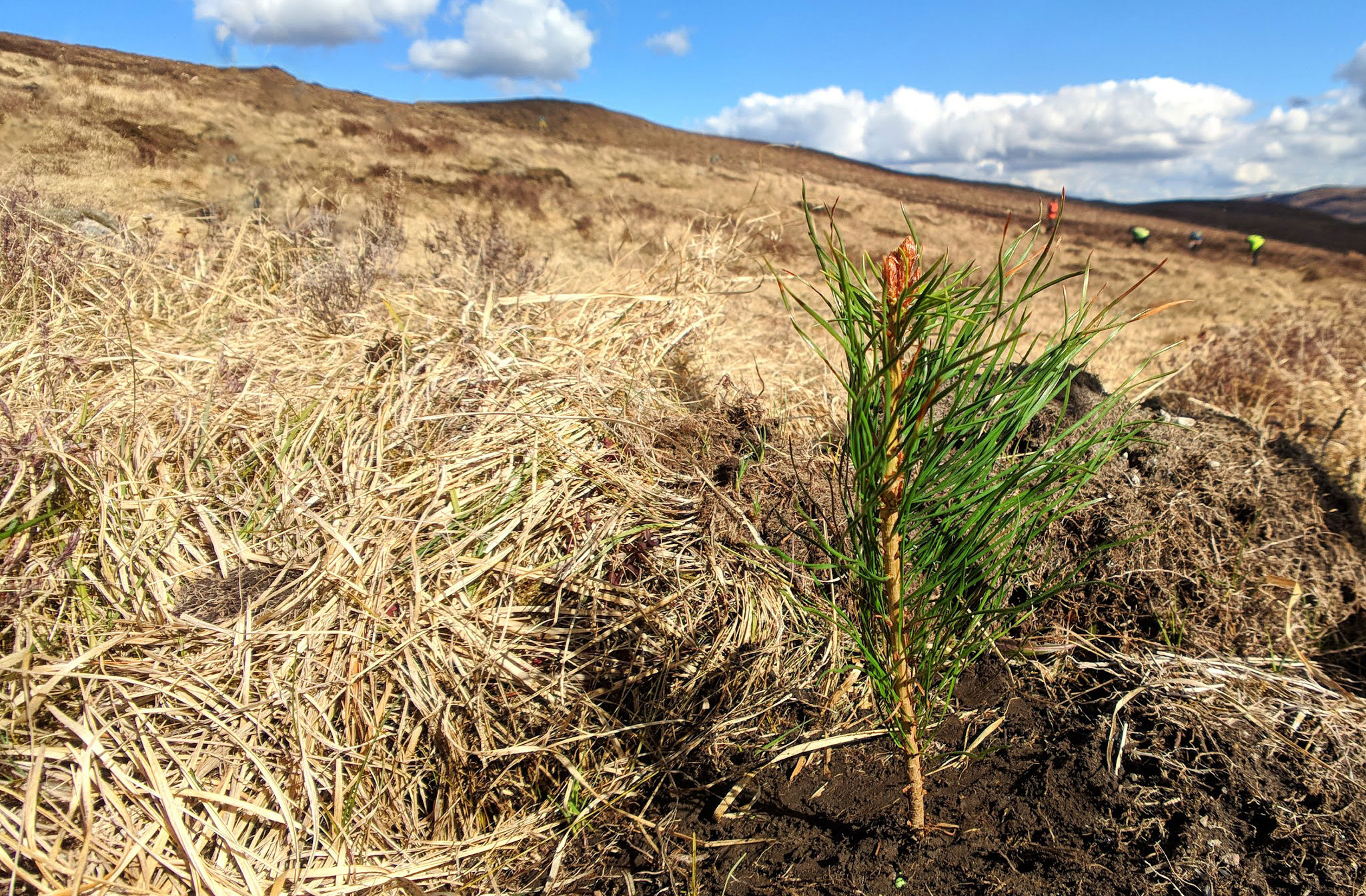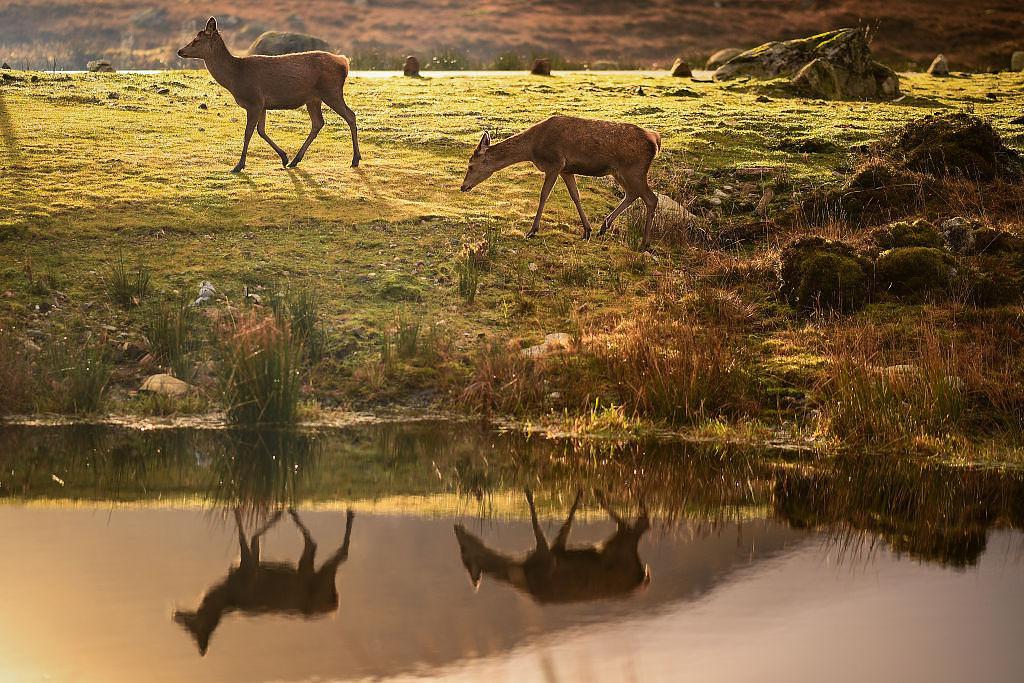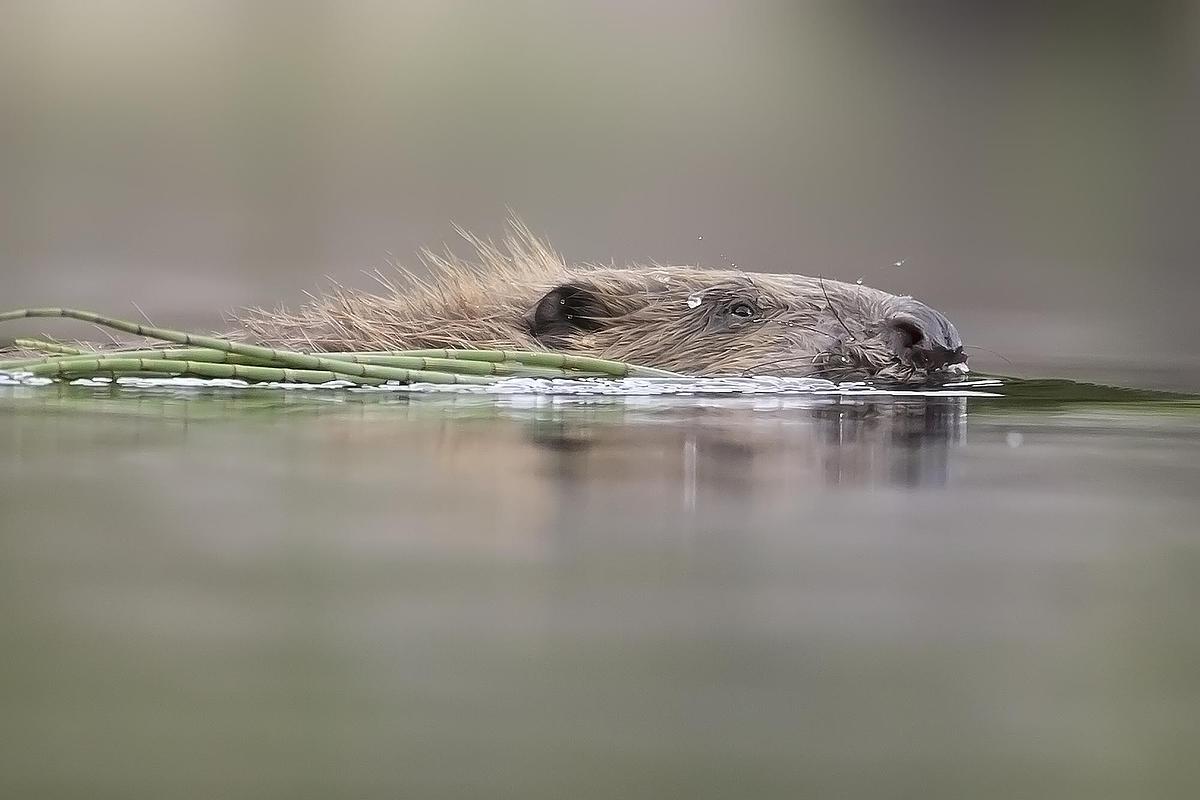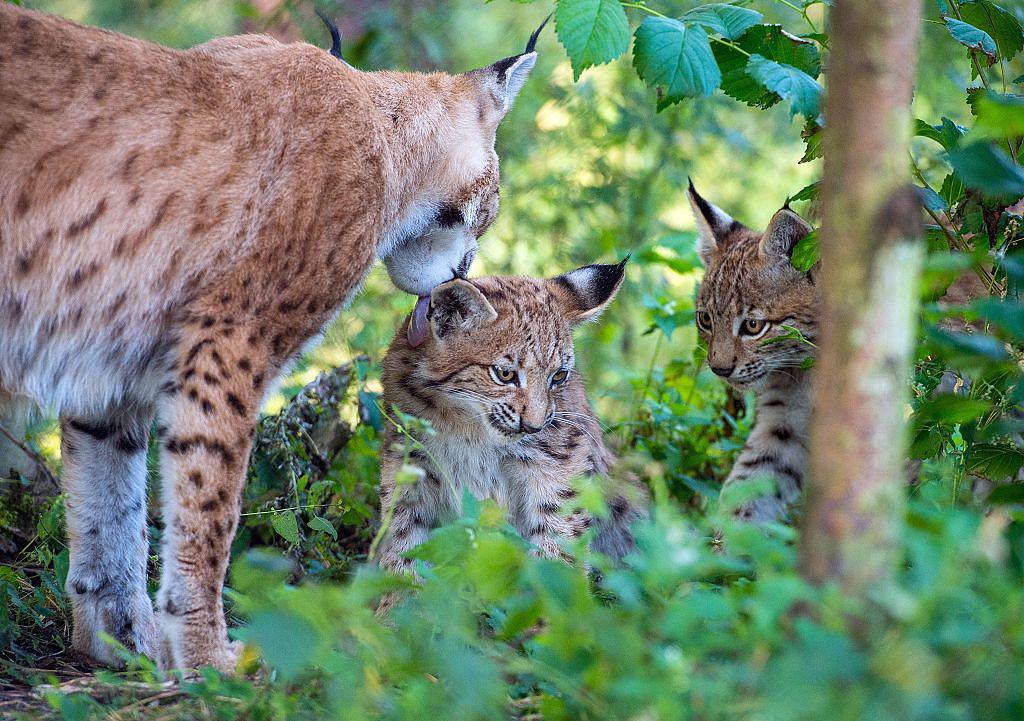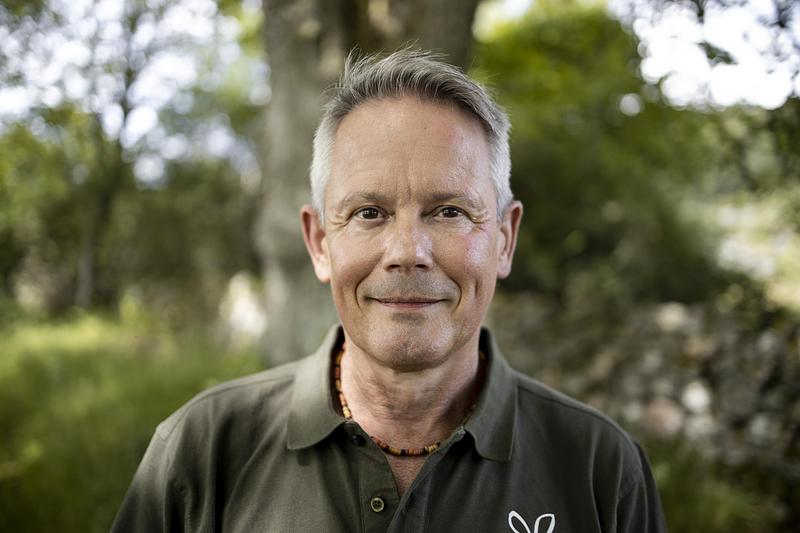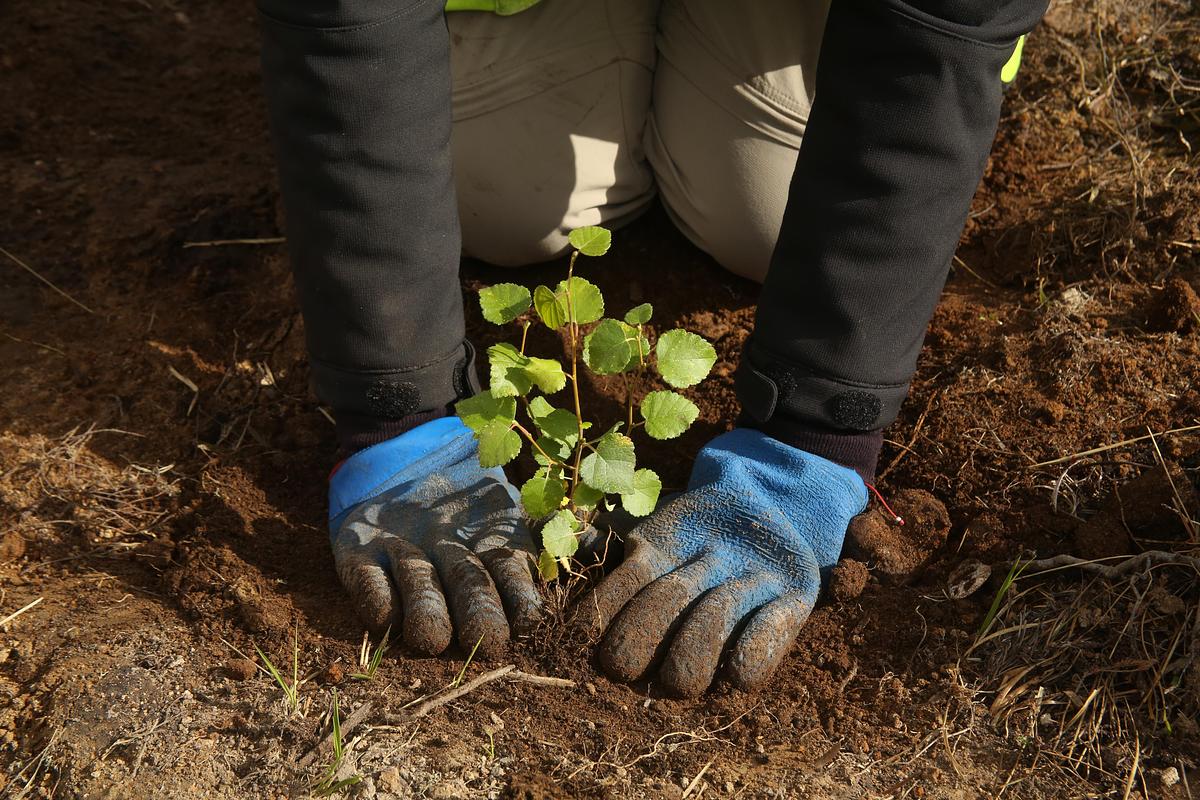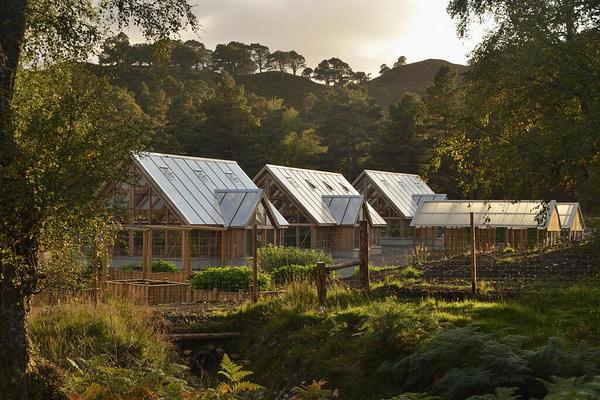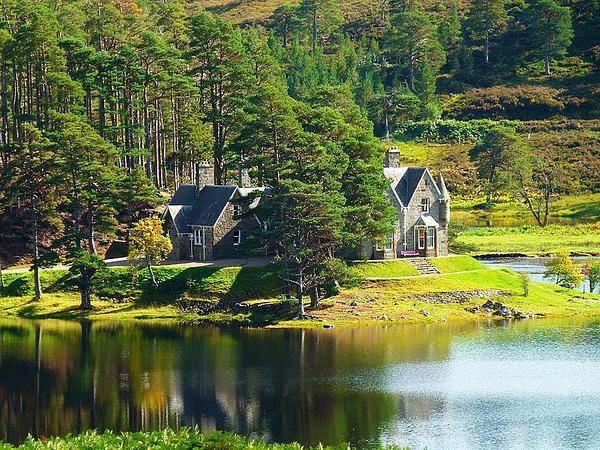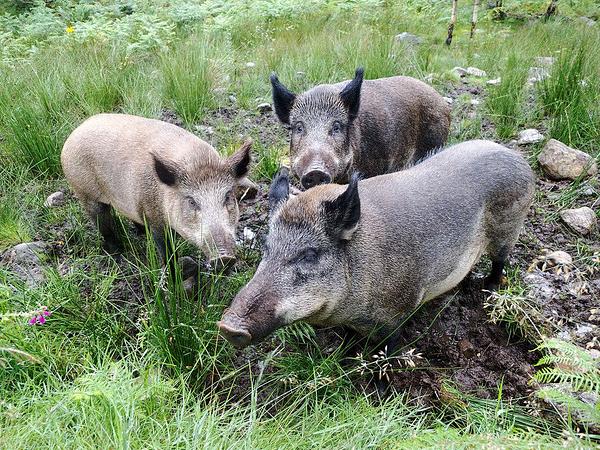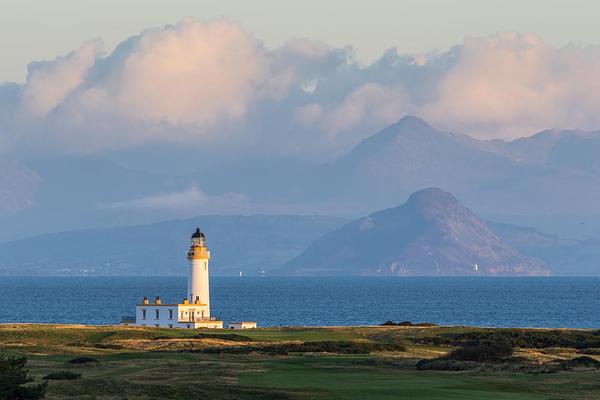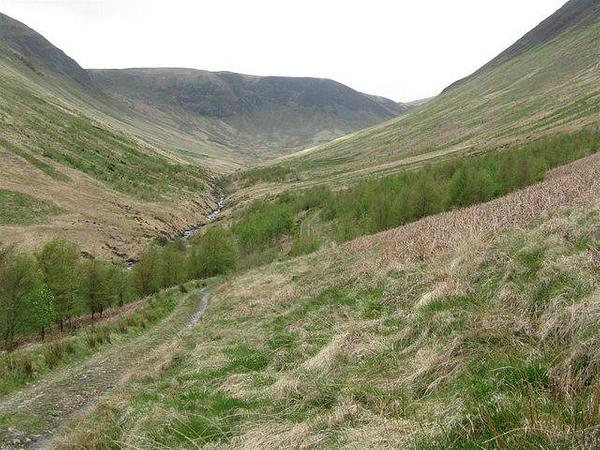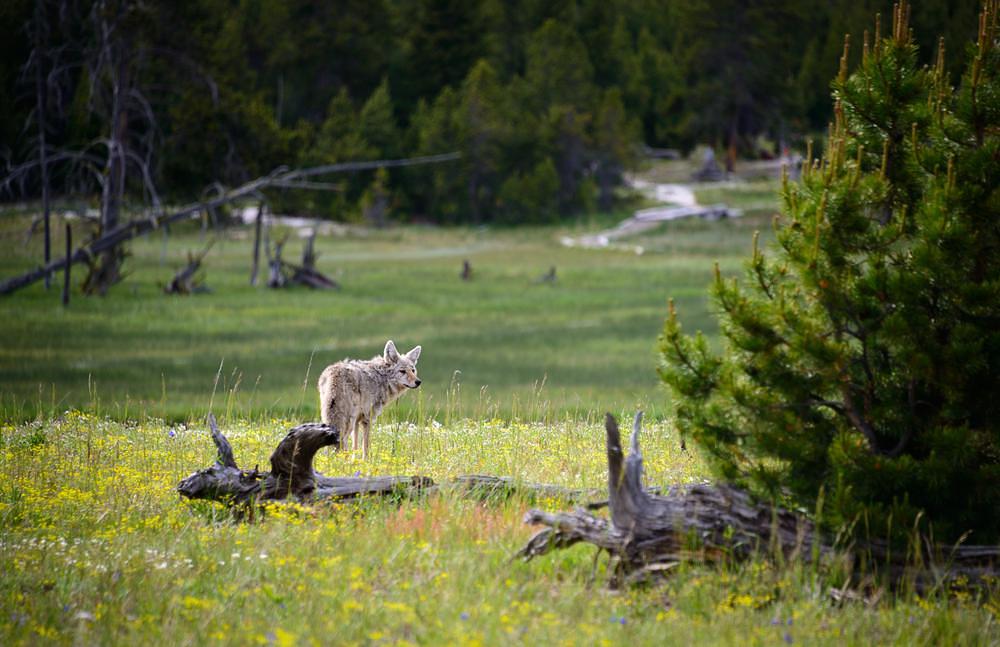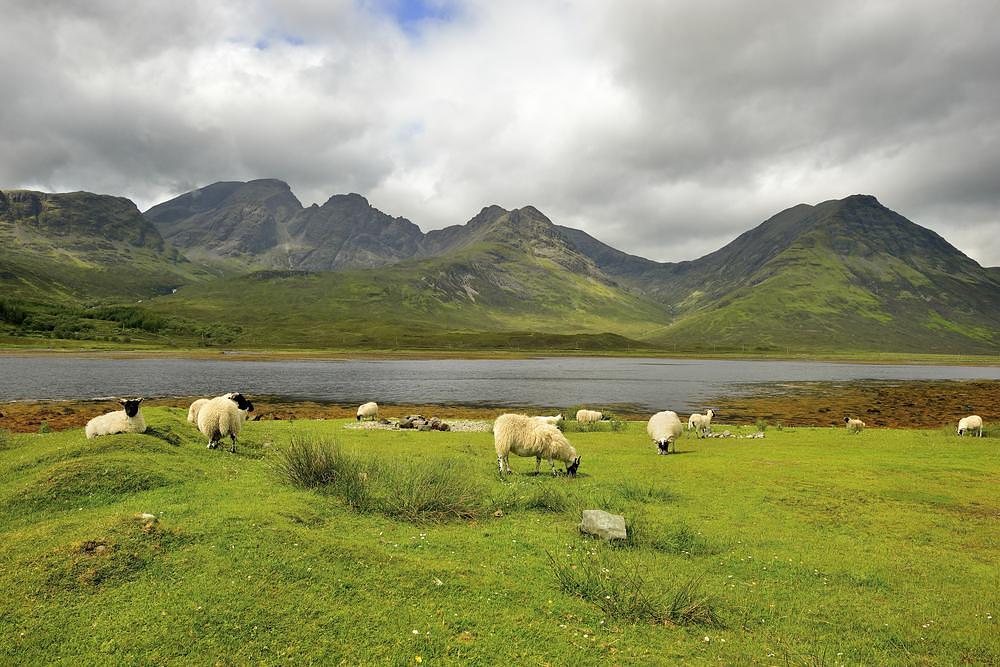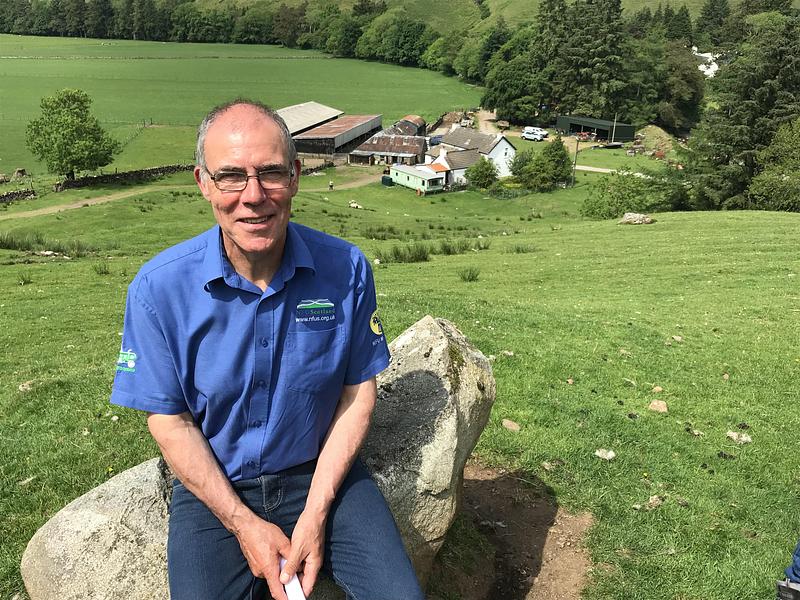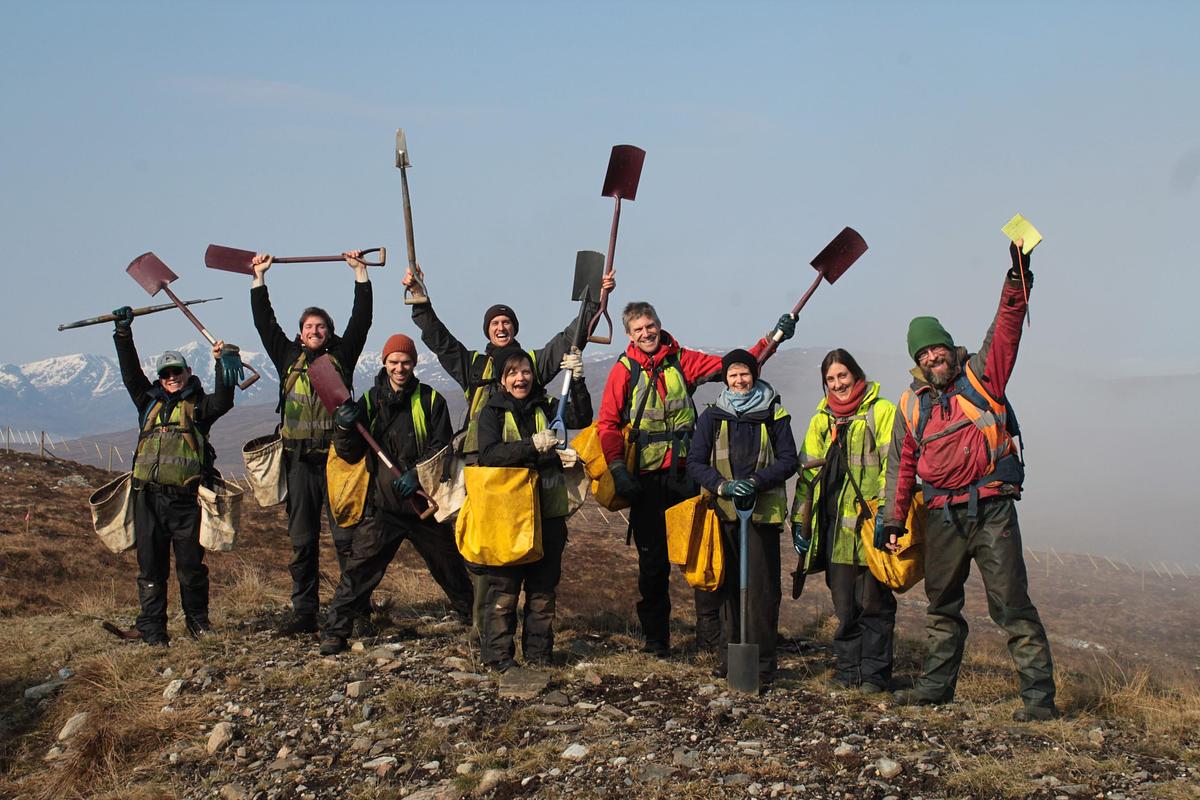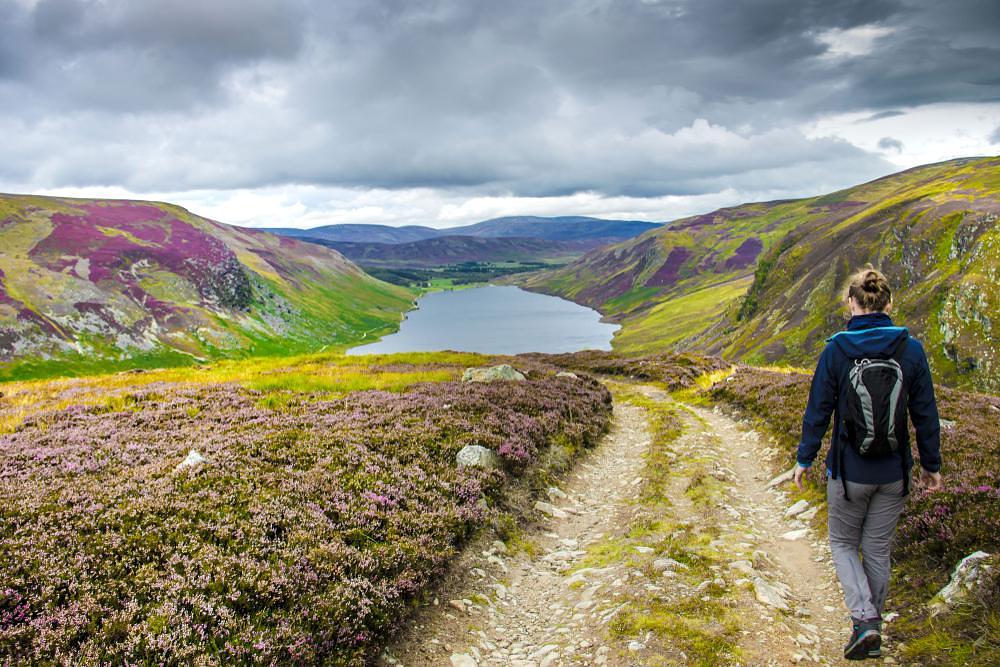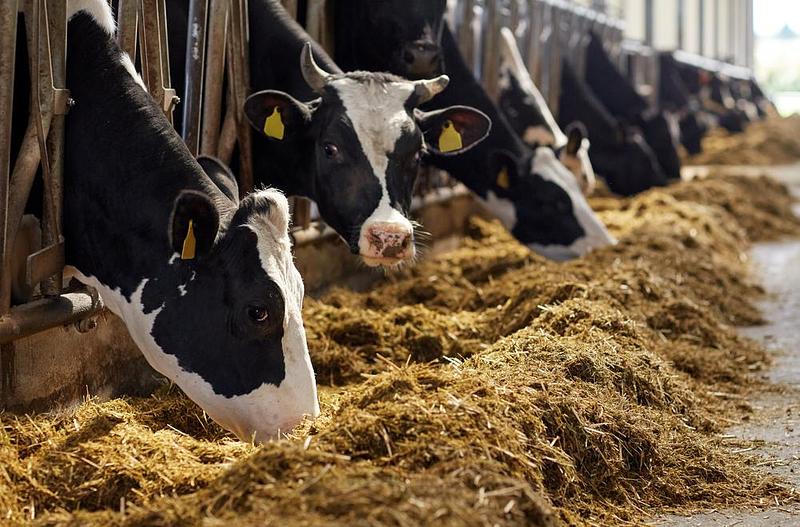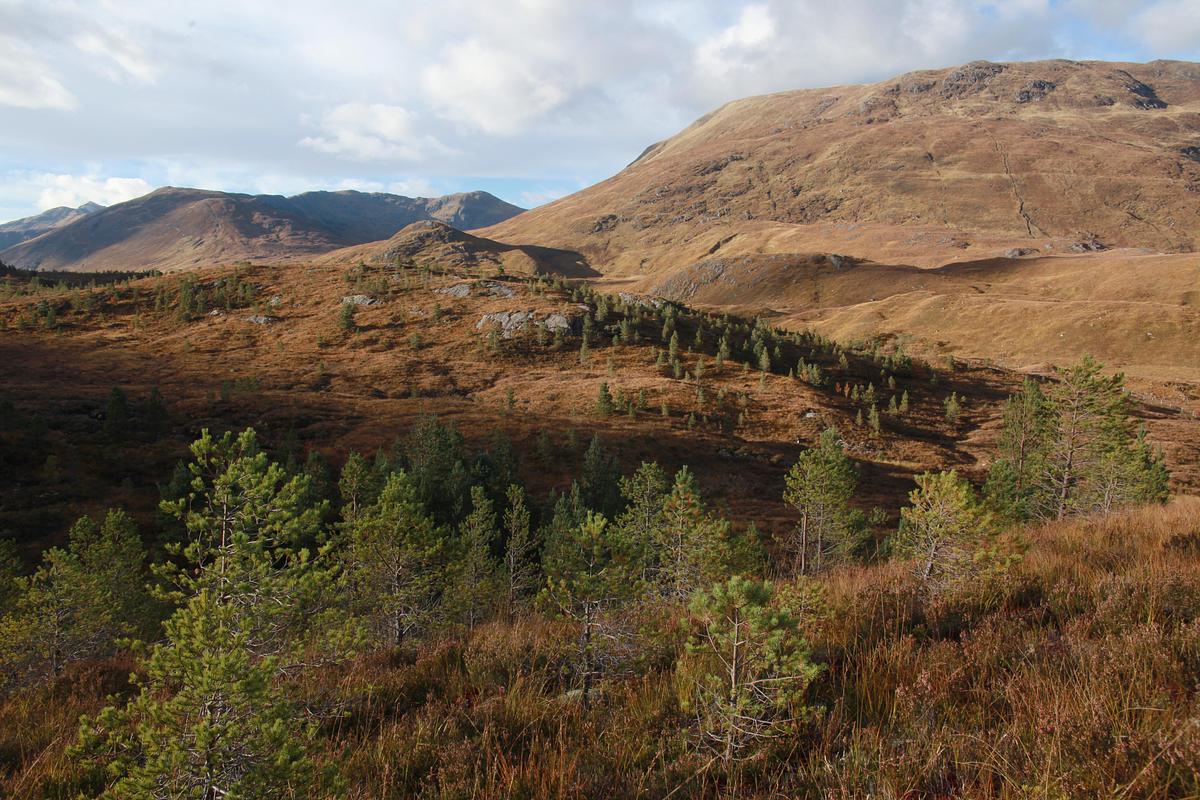The explosion of reactor No.4 at Chernobyl Nuclear Power Plant in 1986 released four hundred times more radioactive material into the environment than the bombings of Nagasaki and Hiroshima put together.
Nearby animals perished, more than 200 people suffered acute radiation sickness, and the trees in a local pine forest - subsequently nicknamed “The Red Forest” - withered, turning brown before dying.
Radioactivity spewed across the entire northern hemisphere, impacting human and animal life as far afield as Wales, where restrictions on the sale of contaminated sheep lasted until 2012.
Today, Chernobyl remains abandoned, with radiation levels still too high to support long-term human residents. For animal and plant residents, however, it’s a remarkably different story.
In the three decades since it became famous for all the wrong reasons, Chernobyl has inadvertently become the world’s most fascinating nature reserve. New trees have pushed up roots in the forest once turned brown by radiation, plants have reclaimed buildings, and bears, wild boar, bison, elk and even wolves roam the abandoned city in numbers exceeding those of neighbouring areas.
Though the health of this animal and plant life is still hotly debated by scientists, Chernobyl stands nonetheless as an example of nature’s astonishing ability to bounce back; even from the most extreme damage.
Few other places on Earth have suffered the same form of environmental catastrophe as Chernobyl. Instead, a different kind of environmental catastrophe, driven by decades of human activity, is fast unfolding in all corners of the globe. Today, ecosystems around the world are in crisis - and, unlike Chernobyl, few have been gifted the time to recover.
In Britain alone, intensive farming, increased use of herbicides and pesticides, hunting, burning, tree felling and overgrazing have led to a decline in 40 per cent of all species, degraded soils, air pollution and water contamination.
It’s long been evident that the natural world needs space to recover - yet removing humans from the picture is, for obvious reasons, a non-starter.
Instead, a growing movement - rewilding - proposes a middle path forward for restoration: hand some managed land back to natural processes and key reintroduced species, while practicing improved, nature-friendly agriculture on the rest.
The idea has been gathering momentum in Scotland for some time, with individuals, charities and environmentalists taking advantage of the country’s sparsely populated land for restoration projects ranging from beaver reintroductions to planting pine forests.
Like any vision of such scale, however, rewilding is much simpler in theory than in practice. In theory, it’s a simple, hands-off way to revive natural processes, revive biodiversity and store carbon. In practice, rewilding rubs up against farmers worried for their livestock, ramblers concerned for their walking rights, and communities doubtful of the benefits to be reaped.
As rewilding seeks to firmly establish itself as a mainstream conservation policy, the movement now stands at a critical juncture: to have a significant net impact on the environment, rewilding must happen at scale, demanding the cooperation of farmers, NGOs, government bodies, charities, businesses and experts. Some, however, are still unconvinced.
Already, practitioners around the world have proven it possible to rewild sea beds, peat bogs, woodlands and forests. Their remaining challenge is rewilding mankind.
DAMAGED LANDSCAPES
‘The old approach has failed’
Every year - with perhaps the exception of 2020 - millions of people visit Scotland in search of “wild” landscapes: craggy, dramatic mountain ranges, lush green glens, glittering ‘fairy pools’ and unspoiled white sand beaches.
Scotland’s natural beauty is both a source of national pride and a seductive draw for tourists across the globe; it would surprise most to learn that it ranks among the most nature-depleted countries in the world.
To rewilding advocates, what many perceive as “wild” today is merely a shadow of the wild landscapes that once dominated Scotland; a country formerly covered by so much forest that the Romans aptly named it “Caledonia” - meaning “wooded heights”.
Scots rowan, birch, oak, aspen and pine trees sprawled the landscape alongside thriving wetlands and peat bogs, wild meadows and thick carpets of moss, lichens and ferns. Lynx, wild boar and wolves roamed the country, and rivers shimmered with salmon and trout.
As human populations grew, however, several key animal species were hunted to extinction, while tree felling for timber and farmland decimated forest and woodland cover.
Red deer, which browse on tree saplings and thus stunt forest growth, exploded in number without wolves preying on them, with estate owners further breeding them for recreational hunting. Over-grazing of sheep and regular burning, meanwhile, led to soil acidification and erosion, flooding and a decline in biodiversity.
As time ran on, humans forgot the old wilderness, and when conservation efforts began, they traditionally - though not always - focused on maintaining landscapes in their existing condition.
“What you traditionally do in conservation is put a fence up around something that is important and treat it like a National Trust building”, explains Steve Micklewright, Chief Executive of rewilding charity, Trees for Life.
“Although that approach has saved some really important things, if you look at the decline of wildlife in Scotland, the UK, the world...that approach has failed.”
Rewilding, he says, offers a radically different approach to conservation that will not only protect Scotland’s natural assets, but restore them to their former glory:
“We [need to] protect the best that we’ve got, and rewild as much of the rest as is feasibly possible.”
SLOW PROGRESS
‘The answer to a lot of different problems’
It’s an approach, Steve says, which people have begun to “converge” on in recent years as “the answer to a lot of problems - climate, nature, human, wellbeing, rural economies”.
For some, however, this realisation came some time ago. In 2003, long before rewilding entered common parlance, Paul Lister used an inheritance to purchase 23,000 acres of land in Sutherland - Alladale Reserve - for the express purpose of rewilding it.
In the 17 years since, he and his team have planted a million native trees, reintroduced a population of red squirrels and revived damaged peatlands. Animals that remain threatened or in decline elsewhere in Scotland - black grouse, water vole, salmon - can all be found living on the reserve.
Rewilding taking root in Scotland
“It’s the right thing to do for the planet,” says Paul, who is one of several wealthy individuals to have pioneered rewilding projects in Scotland. Anders Povlsen, the Danish billionaire and the UK’s largest private landowner, is another prominent example, with a 200-year plan to rewild the thousands of Scottish acres in his possession.
With the Scottish Government reluctant to overtly support rewilding in name or in policy, projects have been driven largely by individuals like Lister along with environmental charities over the past decade or so.
According to Peter Cairns, Executive Director of rewilding charity Scotland: The Big Picture, it’s a process that’s occurred in a somewhat erratic fashion across the country:
“It is growing in a pretty random way - you might argue that that's kind of inevitable as landowner aspirations and motivation to shift and change one way or the other... but it’s definitely growing organically.”
Ecologically speaking, rewilding is still in its infancy in Scotland, but some say the country has already begun to reap the benefits: reintroduced beavers have created biodiverse, carbon-absorbing wetlands, while white-tailed sea eagles now generate up to £5m a year in tourist spending on the Isle of Mull.
Restored peatlands across the country are beginning to mop up carbon, with Stuart Haszeldine, professor of carbon storage and capture at the University of Edinburgh estimating that fully rejuvinated peat could store up to 10 tonnes of carbon dioxide per hectare, per year - the average annual amount emitted by UK citizens.
With an eye on the future, environmentalists often look to international examples of what Scotland could yet achieve with rewilding, from human health benefits to economic and environmental rewards.
“We’re on a journey”, explains Peter, “in which if Yellowstone is 10 on the ecological scale and Glasgow is one, the Highlands and the Islands probably sit at three or four at the moment.”
He stresses, however, that his role is not “to get Scotland from a four to a ten, but a four to a five - it’s a process, and there’s no point getting frustrated at the speed of the journey."
CONFLICTS
‘There’s an underlying fear of the clearances happening again’
Yellowstone, where reintroduced wolves have stabilised a formerly decimated ecosystem, is often heralded as one of the world’s greatest rewilding success stories.
As what conservationists call a “keystone” species, wolves create positive cascades of change which ripple through the ecosystem, increasing beaver populations, bringing back aspen and allowing vegetation to regrow.
In Scotland however, wolves remain a near-untouchable subject.
While some see them as a crucial piece of the rewilding puzzle, Steve Micklewright believes the movement made an early misstep by focusing too heavily on the reintroduction of large predators like wolves - fuelling critics who say rewilding threatens, rather than enriches, human life:
“A lot of people talked immediately about restoring top predators like wolves to Scotland... there’s a huge tradition of wolves being seen as dangerous and a strong sense that a lot of farmers would suffer.
“It’s a debate you can have, but starting with wolves - as the most culturally difficult thing to introduce - I think that was a bit of a mistake.”
It’s a sentiment echoed by Peter Cairns, who believes that the reintroduction of large predators has become a kind of straw man in the rewilding debate, obfuscating the far less controversial - and urgent - elements of the process:
“Talking about wolves [right now] is like talking about putting the cherry on top of a cake before you’ve even bought all the ingredients to bake it...they’re an important part of the system, but right now there’s lots of other stuff to be getting on with.”
Even Paul Lister, a champion for the wolf, is advocating for an enclosed reintroduction on his reserve: “We’re in a country with 65 million people, infrastructure, fences, boundaries, sheep, cattle and pets...releasing wolves into the wild would be nothing more than foolish.
“I’m not in favour of a wolf reintroduction...the best way forward is creating a fenced reserve like they’ve done in dozens of places in South Africa...it creates tourism and it creates jobs.”
Peter believes the perceived conflict between humans and wolves has toxified the rewilding debate, but it’s not the only factor driving resistance:
“The controversy over rewilding is unique [to Britain] - you go over to Europe and people might not always like it but there’s not this contentiousness around it.”
Much of the reason for this, he explains, lies in cultural traditions and history. “Some people believe rewilding is about moving predators in and moving humans out. [In Scotland] there’s an underlying fear of the Clearances happening again.
“Nowhere else in Europe is so much land in the hands of so few people”, he adds.
“Twenty-five per cent of the land area is dedicated to Victorian pursuits like deer stalking…the Victorian values associated with that system are certainly a barrier [to rewilding].”
Presenter and conservationist Jamie Wyver, who researched public attitudes towards the reintroduction of lynx as part of his master’s degree, believes that, alongside entrenched cultural values, “shifting baselines” also have a role to play in people’s resistance to rewilding:
“What would have been a normal thing for my grandparents to experience [in nature] when they were living in England 50 or 60 years ago would be alien to me now...butterflies were much more abundant for example.
“We accept the way the world is now - that’s shifting baselines...it’s really important to reflect back even a couple of generations to remember how much richer nature was.”
HEARTS AND MINDS
‘The landscape has changed’
Through his research into public attitudes towards lynx reintroduction, Jamie found that those with a greater understanding of lynx ecology - including their role in the ecosystem - were more likely to have positive attitudes towards them.
One crucial demographic, however, bucked the trend. Jamie’s analysis suggested that for farmers, a more refined understanding of lynx ecology did not equate to a more positive stance, but a slightly more negative one.
It’s a finding that represents a wider issue for the rewilding movement: though farmers may not form the majority of the population, they currently manage a vast amount of the land. Without them on board, moving forward will be impossible.
Angus McFadyen, a hill farmer from Oban and chairman of the Environment and Land Use Committee for the National Farmer’s Union Scotland, (NFUS) says that the union “doesn’t have a position as such” on rewilding, but adds that they find the reasons for rewilding “controversial”:
“We would say it [rewilding] seems to be detrimental to wildlife management...once these areas are not grazed and not managed properly they become impenetrable areas.”
Angus's concerns echo those of other farmers, who fear that their work will - and indeed already is - under threat by the reintroduction of formerly native species. Beavers, for instance, have caused damage to trees and exacerbated flooding, while white tailed sea eagles have been known to abduct lambs from hillsides.
“What people forget is that the landscape has changed,” says Angus.
“They’re proposing the reintroduction of animals which went extinct roughly 400 years ago or longer...the landscape has changed, the environment isn’t suitable anymore,” he adds, pointing to the fact that there are far fewer fish in Scotland’s rivers today than there once was, leading animals like sea eagles to seek alternative food sources.
While refuting this claim - “two PhD studies of the potential for lynx reintroduction in Scotland have shown there is enough woodland habitat [for lynx]” - Steve Micklewright stresses that rewilding can only move forward by looking at “what is acceptable to wider society”, or risk charities like his own becoming “more like a think tank than an impactful organisation”.
Peter Cairns has often encountered such strong opposition as part of his ongoing participation in The Big Picture’s outreach project, “Building Bridges”, which entails open conversations with farmers and landowners on rewilding.
Rewilding, says Peter, is “as much about changing mindsets as it is about changing the physical environment”. Without involving people in the process, he says, “you risk fuelling the narrative that nature is a commodity outside of human activity”.
Many of the conversations had as a part of “Building Bridges” have been productive, says Peter, even where farmers or landowners have been against rewilding in principle:
“Even when talking to people who you would imagine are diametrically opposed in their perspective to you, it’s always possible to find common ground,” he explains, pointing to one example where a farmer was opposed to fresh animal reintroductions, but valued the return of red squirrel populations.
Critics of rewilding often position the movement as an imposition on rural communities by urban outsiders, but, on the whole, these communities may already be more amenable to the idea than some think.
Jamie Wyver’s 2014 research into the reintroduction of lynx, for instance, found that 65 per cent of those surveyed who had lived in the countryside agreed or strongly agreed with lynx reintroduction, compared to just 52 per cent of those from towns.
In spite of some sensationalist headlines, Paul Lister cites just two negative comments from members of the public regarding his ambitions for a wolf enclosure in the 15 years of extensively publicising the idea. Peter, meanwhile, says there’s “ barely a week” that goes by without “a farmer or landowner getting in touch to enquire about rewilding their land...the appetite is unprecedented ”.
POLICY CHANGE
'It’s about what we want the UK to look like in 20 or 30 years'
Winning over the public won’t be possible, believes Steve Micklewright, without a change in the “policy environment”, which he sees as the “biggest obstacle of all” to large-scale rewilding.
Currently, NatureScot, the Scottish Government’s body responsible for natural heritage, is reluctant to use the term “rewilding” in any communications, despite practicing it themselves.
“The concept has been taken up by people who want mammal and carnivore reintroductions, which is obviously a hugely sensitive subject...so at the moment we don’t use the term,” explains Chris Donald, South Highlands Area Manager for NatureScot.
Most rewilders believe that the most important policy change now required is a shake-up of the agricultural subsidy system - already planned in England - which has traditionally rewarded farmers for productivity above all else.
A subsidy system that rewards farmers for environmental work like carbon storage, says Peter, will certainly “oil the engine” for the rewilding movement - but he believes it’s a mistake to assume that “it’s as simple as money opening the floodgates”.
“Not every farmer or landowner is simply motivated by money,” he adds, saying that “deeply embedded cultural values” will take some time to change.
Carbon expert Stuart Haszeldine additionally points out that a new subsidy system which rewards farmers for nature-friendly practices will be subject to “policy change”, meaning it would be unwise for farmers to rely solely on these payments for income.
Further issues, such as future forest fires releasing carbon back into the atmosphere, and compensation for farmers who lose livestock to new predators, may arise in the future without adequate preparation or planning, he adds.
Already in Scotland, rewilding work has hit roadblocks. In 2019, 87 of Scotland's beavers were killed by landowners using legal "license to kill" permits issued by the government - wiping out a fifth of the total population.
The problem partly arose out of an unplanned reintroduction of beavers to the Tayside area, the result of either an illegal reintroduction by humans or an escape from captivity.
Because the Scottish government won't currently allow the relocation of beavers causing problems for farmers, Tayside farmers are instead inclined to apply for permits to shoot the animals, which are a protected species in the country.
Trees for Life have launched a court challenge in response, calling on the Scottish government to make killing beavers a "last resort" for farmers, and offering relocation as an alternative.
For Peter Cairns, the possibility that these Tayside beavers may have been illegally reintroduced anticipates what could yet happen if the government's action on the environment is felt to be too slow:
"If the bureaucratic process for reintroducing lynx grinds on at the same pace that it did for beavers - about 20 years - there will almost undoubtedly be a white van that appears in the middle of the night and releases some lynx.
"I'm not saying it's right or wrong, but some people just want them [the government] to get on with it".
While Jamie Wyver admits that such issues may make for a bumpy road ahead, he stresses the importance of presenting the public with the "big picture" around the benefits of rewilding, explaining its potential to create a better future not just for animals and plants, but humans too:
“[Rewilding] isn’t just popping a predator back here or introducing an eagle there, there’s a big picture here. It’s about what we want the UK to look like in 20 or 30 years’ time.”
The current pandemic, which has been linked to the destruction of nature, could provide the shock needed to convince people that radical change is needed, he adds, with people now “questioning whether they want to go back to normal, or whether they want a new normal with healthier landscapes and lives.”
Ultimately, says Peter, rewilding can be sold on the basis that it offers hope to a world bombarded by images, stories and the reality of environmental destruction:
"Without sounding too twee, what I do on a daily basis is sell hope to people - that's what we're in the business of doing.
"We could spend all day arguing over what rewilding does and doesn't mean. But the principle of restoration and recovery, rather than just protecting the fragments and threads of nature, most people buy into - the rest is just semantics".
